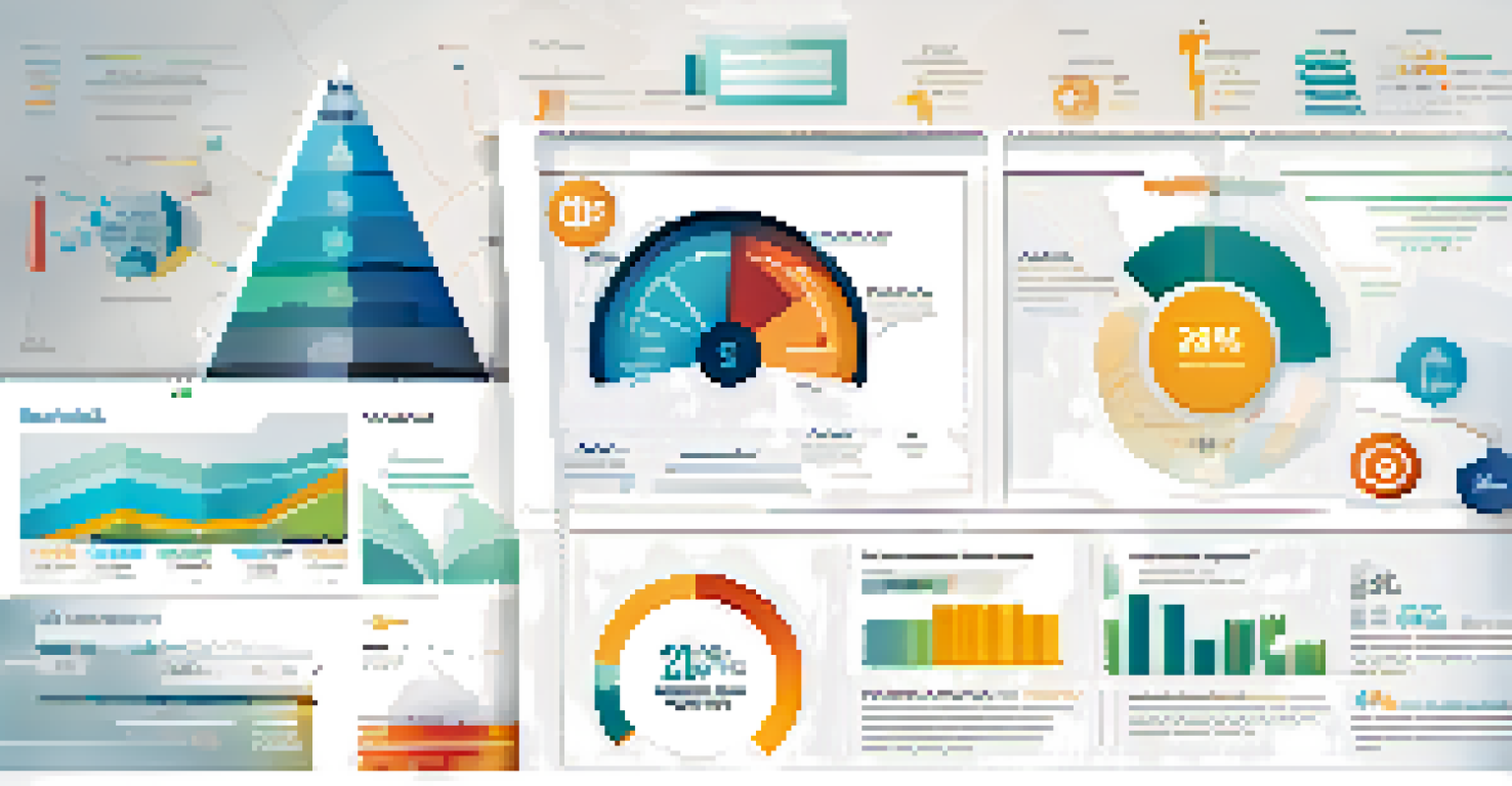How to Identify Your Target Audience Effectively

Understanding the Importance of a Target Audience
Identifying your target audience is crucial for effective marketing. It allows you to tailor your messages and products to meet the specific needs of potential customers. Without a clear understanding of who your audience is, you might end up wasting time and resources on strategies that don’t resonate.
Marketing is no longer about the stuff you make, but about the stories you tell.
Think of your target audience as the compass guiding your marketing efforts. Just like a ship needs a destination to navigate effectively, your business needs to understand its audience to steer its marketing in the right direction. Knowing who you're talking to helps you create content that speaks directly to them.
Moreover, understanding your target audience can foster deeper connections. When people feel understood, they’re more likely to engage with your brand and become loyal customers. This connection is often the difference between a one-time buyer and a lifelong advocate.
Conducting Market Research: Where to Start
Market research is the backbone of identifying your target audience. Start by gathering data about your existing customers and analyzing their demographics, preferences, and behaviors. Surveys, interviews, and social media analytics can provide valuable insights into who your audience is.

Utilizing tools like Google Analytics can also reveal how users interact with your website. By examining metrics such as age, location, and interests, you can paint a clearer picture of your audience. This data acts as a foundation for developing your marketing strategy.
Know Your Audience for Success
Identifying your target audience is essential for tailoring marketing efforts and fostering deeper customer connections.
Don’t forget to look at your competitors, too. Analyzing their audience can provide hints about potential gaps in the market or segments that may be underserved. This competitive analysis can help you refine your target audience further.
Creating Customer Personas for Better Clarity
Once you have gathered your data, creating customer personas is a great next step. A persona is a semi-fictional character that represents your ideal customer based on the information you've collected. This practice helps humanize your audience, making them easier to relate to.
The aim of marketing is to know and understand the customer so well the product or service fits him and sells itself.
For instance, if you're selling eco-friendly products, your persona might be 'Eco-Conscious Emma,' a 30-year-old woman who prioritizes sustainability. By defining her interests, challenges, and buying motivations, you can tailor your marketing efforts to resonate with her.
Customer personas also help in aligning your team’s efforts. When everyone understands who they’re targeting, it becomes easier to create cohesive campaigns that speak to the same audience. This unified approach can significantly enhance your marketing effectiveness.
Analyzing Competitors to Identify Gaps in the Market
Looking at your competitors can offer valuable insights into your target audience. By analyzing who they’re targeting and how they’re engaging with them, you can identify potential gaps in the market. Are there segments that they’re overlooking? This can be your opportunity to step in.
For example, if a competitor focuses primarily on young professionals, consider targeting a different demographic, like families or retirees. Understanding what your competitors do well—and where they fall short—can help you carve out a niche for your brand.
Utilize Data for Insights
Conducting market research and analyzing social media metrics provide invaluable insights into who your audience is and what they want.
Additionally, monitoring competitor social media channels can reveal the types of content that resonate with their audience. Engaging with their followers can also help you gather insights into what people are looking for, guiding your own content strategy.
Utilizing Social Media Insights for Target Audience Data
Social media platforms are treasure troves of information about potential customers. By analyzing engagement metrics on your posts, you can determine what resonates with your audience. This includes likes, shares, and comments, which can give clues about their interests and preferences.
Tools like Facebook Insights and Instagram Analytics can help you drill down into the demographics of your followers. Understanding who your audience is on these platforms can inform your overall marketing strategy and content creation.
Moreover, don’t hesitate to engage directly with your audience. Asking questions and encouraging feedback through polls or comments can provide real-time insights. This two-way communication fosters a sense of community and enhances your understanding of your target audience.
Refining Your Target Audience Over Time
Identifying your target audience isn’t a one-time task; it’s an ongoing process. As market trends and consumer behaviors evolve, so should your understanding of your audience. Regularly revisiting your customer personas and market research can help you stay relevant.
For example, during a global crisis like a pandemic, consumer priorities may shift dramatically. Being responsive to these changes and adapting your marketing strategies accordingly is crucial for maintaining engagement and relevance.
Adapt and Measure Over Time
Refining your target audience and measuring key metrics ensures that your marketing strategies remain relevant and effective.
Consider conducting periodic surveys or feedback sessions to gather updated data. This proactive approach not only helps in refining your target audience but also demonstrates to your customers that you value their opinions and are committed to meeting their needs.
Measuring Success: Key Metrics to Track
Once you’ve identified your target audience, it’s essential to measure the success of your efforts. Key performance indicators (KPIs) can help you determine whether your marketing strategies resonate with your intended audience. Metrics like conversion rates, engagement levels, and customer feedback are vital.
For instance, if you notice a high conversion rate from a specific demographic, it indicates that your marketing is effectively reaching that audience. Conversely, low engagement from another segment might signal the need for a strategy rethink.

Regularly reviewing these metrics allows you to make informed decisions about your marketing tactics. This data-driven approach ensures that you are continually optimizing your strategies to better connect with your target audience.